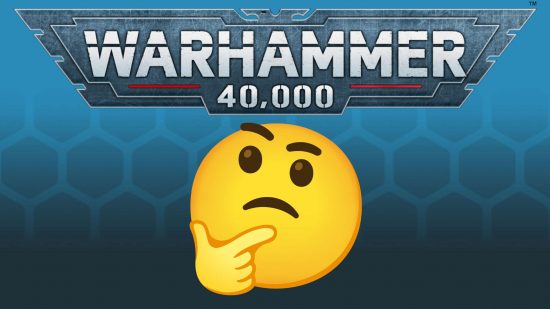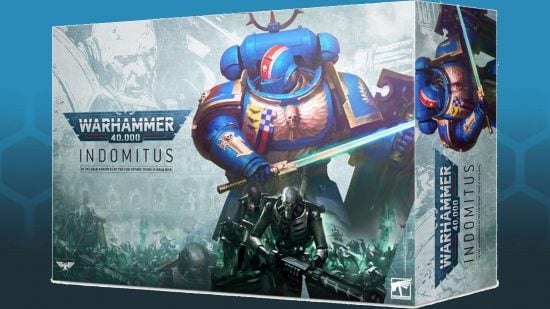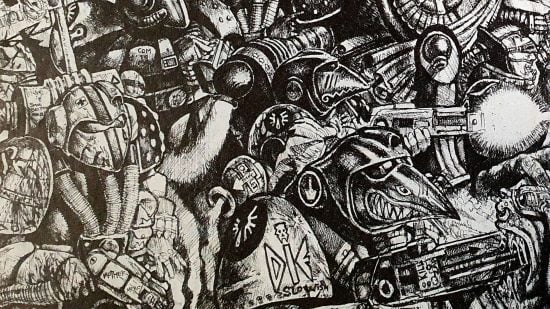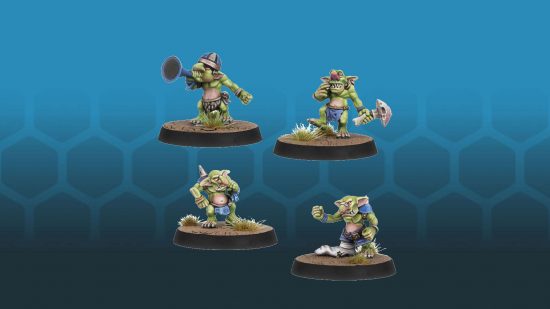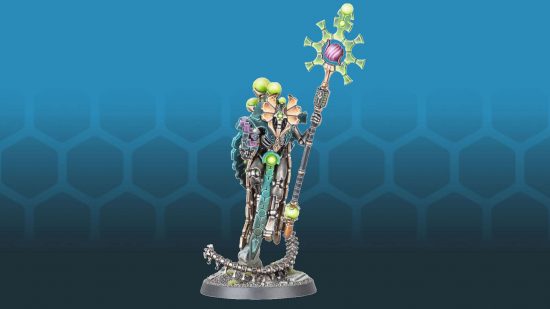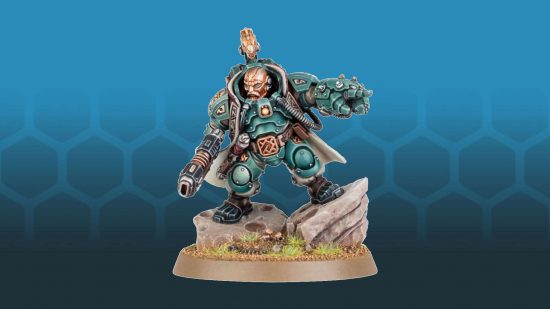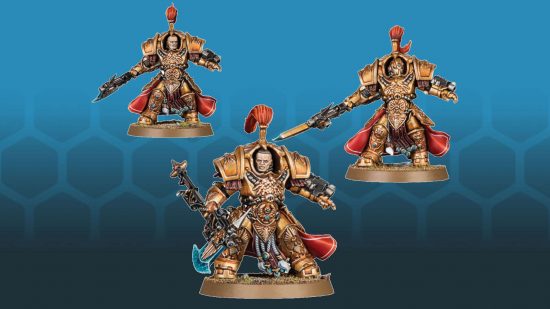Warhammer 40k retcons are part and parcel of the franchise: over 37 years the lore of the game has evolved, usually by introducing new features, occasionally by rewriting what came before. This whistle-stop tour will introduce you to a few honking great Warhammer 40k retcons you may have missed.
With the recent Warhammer 40k Codex release for the Adeptus Custodes, Games Workshop has revealed that there are (and always have been) female Adeptus Custodes. Given that the Custodes wear fully enclosing suits of auramite power armor, and have their entire personality overwritten so they can better protect the Emperor of Mankind, their gender is irrelevant – this will change very little.
In contrast, these Warhammer 40k retcons were whoppers:
The Warhammer 40k timeline was rolled back 100 years for ninth edition.
When Warhammer 40k eighth edition launched in 2017, it skipped over 100 years of history all the way to the end of the Indomitus Crusade. When ninth edition launched in 2020, that timeline was rolled back – new codexes and novels are set in the first decades of the crusade.
This had a direct impact on Guy Haley’s Warhammer 40k book series ‘Plague Wars’, which he started during eighth edition and finished during ninth. The first two books were published using the original timeline, but when the third book was released, they were edited to match the updated timeline and republished.
The Primarchs were just Space Marines
When the Space Marine Primarchs were first mentioned, they were just the leaders of Space Marine chapters, not the sons of the Emperor. A teeny-tiny Leman Russ miniature was even produced for the first edition of Warhammer 40k, holding the leashes of two very small wolves.
Space Marines were just humans
Aside from their unique Space Marine armor, the original Space Marines were simply human soldiers. They were very elite soldiers, sure, but the special Space Marine organs that make them into transhuman badasses weren’t part of their lore until midway through first edition 40k. Accordingly, they only had toughness three for the game’s first edition.
Orks had good aim
The designers at GW only settled on the idea that Orks are bad at shooting and good at fighting during Warhammer 40k third edition. Before that they had very similar stats to the Imperial Guard, and were mostly differentiated by all the wacky weapons they had access to.
The Orks were once the slaves of the Snotlings
Since the first Ork supplements, Ork lore has referred to a lost race called the ‘Brain Boyz’ which was responsible for Ork technology and perhaps even their genetics. Modern lore points to this being the Old Ones, who created the ‘Krork’ during their war against the C’tan and Necrons during the War in Heaven. But the War in Heaven was made up during third edition 40k – before that, who were the Brain Boyz’?
Tiny, idiotic greenskins called Snotlings. Early Ork lore in books like Waaagh! Da Orks and ‘Ere We Go! states that a rare fungus gave the Snotlings the intellect needed to rule Ork society and take it into the stars. Unfortunately for them, this temporary advantage in brains didn’t help overcome the Orks’ advantage in brawn, who ultimately ended up on top of the heap – and the brainifying fungus died out.
Necrons had no personalities
Necron models were introduced late in second edition 40k, and then fleshed out with a Codex and lore midway through third edition. In that version of the Necrons backstory they never defeated the C’tan, and when they awoke in the 41st millennium they were mindless puppets. This didn’t change until fifth edition.
While the concept of full-powered C’tan wandering around in 40k is cool, it would mean we miss out on excellent characters like Trazyn the Infinite and Nemesor Zahndrekh, and great books like The Infinite and the Divine or The Twice Dead King.
The Leagues of Votann existed, then didn’t, then did
The Leagues of Votann are a modern reinterpretation of the Squats, a faction of space dwarves introduced in first edition 40k and given rules (but no new models) in second edition. They were absent from third edition, and were generally considered to have been wiped out by the Tyranids.
But they weren’t gone forever. The sixth edition rulebook makes a minor mention of “Homo Sapiens Rotundus” still existing. A new Squat bounty hunter mini was released for Necromunda in 2018, followed by the full Leagues of Votann Warhammer 40k faction in 2022. The Leagues have now always been around in the background of Warhammer 40k, even teaching the T’au Empire how to make its trademark rail rifles. We just never saw them.

There was no Horus Heresy
When Warhammer 40k launched in 1987, the Emperor of Mankind was already consigned to the Golden Throne for life support. But it wasn’t Horus Lupercal who put him there – he was just incredibly old and tired from all his psychic shenanigans. In fact there was no Horus Heresy.
When GW published 1988’s Adeptus Titanicus, it could only afford to make one mold for vehicles. To explain why both forces were fighting with exactly the same Warhammer Titans, GW invented the Horus Heresy civil war. That year, Realm of Chaos: Slaves to Darkness fleshed out the timeline of the Horus Heresy in greater detail. There are a lot of differences between those three and a half pages of lore and the version in the Horus Heresy book series.
The lore of Warhammer 40k isn’t written by a single author, but a myriad of creatives balancing their ideas against the needs of a company that turns a profit both from inventing and selling new plastic doodads, and from licensing its distinctive IP to various other businesses. Because those creatives are clever and interesting, the results usually are, too. But it will only stop changing when 40k is dead.
If you’re curious why some people have particularly strong reactions to lore changes, Wargamer’s visiting psychiatrist Dr. Joe Stammeijer has an article exploring some of the psychological factors that make gamers unhappy with change.
If you’ve seen some particularly vitriolic responses to the news about female Custodes, it’s a symptom of a larger phenomenon: editor Alex Evans dives into that in more detail in an article about the fraught question of female Space Marines.
